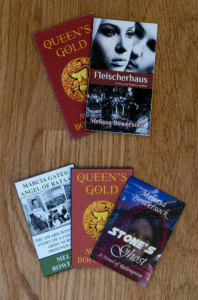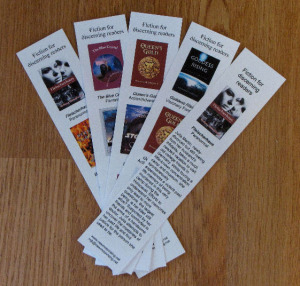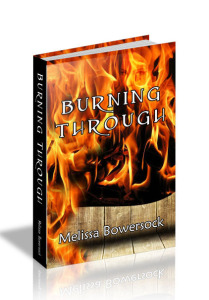We’ve all heard the old maxim, “Act in haste; repent at leisure.” This is true in a lot of things, most especially in publishing. Why more so in publishing? Because when we authors act in haste, we’re not just saying something inappropriate that will be forgotten in time; we’re not just acting badly in one instance that eventually will be forgiven. We’re putting our words out there on paper (or on screen) forever.
Forever.
This issue has cropped up fairly often lately. I do beta-reading, formatting, and editing for quite a few authors, and I see the result of this rush to publish more than I like. I read one friend’s story that, for the first 80% of it, had nice pacing and flowed along fairly well. Then, as if a switch was flipped, the last little bit of it suddenly turned into “telling, not showing,” more like an epilogue than the natural ending of the story. I told the author I could not, in all honesty, give his story a decent review because it seemed unfinished, as if he had just quit on it. He confessed that he knew he needed to flesh out the ending more, just hadn’t gotten around to it.
Then why publish?
I helped another author format a book for paperback via CreateSpace. Once we uploaded the file to CreateSpace and had the online proof reviewer available, she perused that for a few pages and called it good. She was ready to hit the publish button without even taking the time to check through the entire book or order a print proof to review. I cautioned her on this and luckily, she listened. Once she had the physical proof in her hands, she realized the book was anything but ready. We went through another major read-through and edit, then still found a few scattered typos even after she published.
One more author asked me to take a look at his newly-published eBook and gifted it to me for that purpose. I was shocked to see an error on the cover, no front matter at all, no copyright or publication data, and too many formatting errors to count. I understand doing a soft launch, publishing and then asking trusted friends to read and comment before the full-blown official launch, but even for that, the book should be as good as the author feels s/he can make it. Sure, we can always tweak it, but at least get it as close to a finished product as possible.
The problem with the rush to publish is not just that readers will see an unpolished “not ready for prime time” effort, but that this unprofessional version could be floating out there in the ether for a long, long time. Whether readers have bought a paperback or an eBook, if the first version was so glaringly unfinished, how likely are they to try the next (hopefully perfect) version? How many of those paperbacks will get recycled at the local used bookstore, and how many of those eBooks will lie fallow on Kindles or iPads, forever unedited? These ghosts of impatience and incaution could be in circulation for a long time, reminding readers of the author’s lack of professionalism. Like duck-face Facebook pictures, these unpolished embarrassments can come back to haunt the author again and again for years.
Believe me, I know well the urge to finish up a book and call it done. The very first book I sold to a publisher was one I worked on tirelessly for the better part of a year. It was an historical romance (western) about a half-breed trying to find her place in the world. Born of a Cheyenne warrior and his captive white wife, the girl was raised on the Great Plains as a Cheyenne. When, at the age of thirteen, she and her mother were recaptured by the US Cavalry and sent to New York to live with the girl’s grandparents, where she was forced into the new and alien culture, reconditioned and disguised as a young, well-bred white woman. At the age of twenty, she fled the white world for the unsettled West once more, searching for her Cheyenne family and hoping to find the one place in the world where she could finally call home.
My original plan had been to be as authentic as possible in the representation of the Cheyenne culture of the time. I had a pile of books on the Cheyenne and had copious notes on the structure and organization of a Cheyenne village. However, by the time I got to that part of the story, I was so sick of it all that instead of writing the detailed experience I had planned, I settled for a truncated version that skipped most of the essence of the Cheyenne culture. I rushed to finish the book and start sending it off to publishers.
Luckily for me, the publisher that bought the book wasn’t happy with the final page count. After they’d accepted the book and sent me my advance, I got a brief and unapologetic letter saying I needed to add 70 pages to the book. More luckily for me, this was a few years after I’d finished the book, so I was able to go back with a fresh view and add all the detail in the experience in the Cheyenne village that I’d left out before. Seventy pages later, the book was complete, and was finally the book that I had originally wanted it to be.
The rush to publish is something most of us have to grapple with at some point or another. K.S. Brooks talked about her own experience with this in a post called Letting a Manuscript Sit. It’s nothing new, but the problem is that it’s seductive. We get tired. We get bored. Maybe we already have an idea for a new story brewing, and we want to get on with it. We want to finish the one we’re working on and check it off our list. Don’t do it. Readers can tell. I had one friend tell me that he read a book where he could tell just about every time the author reached the end of his day, because the quality of the writing fell off appreciably. At the start of the next chapter, it would come back fresh and alive, but later on would flag again. Readers can tell.
If you’re tired, bored, or have less than full commitment to your story, don’t rush to finish it. Put it aside and do something else. Come back when you’re fresh. And whatever you do, don’t publish if you have any niggling thoughts about, “I can fix that later.” Don’t do it.
Think about those duck-face Facebook photos.
Originally published by Indies Unlimited on December 30, 2014






